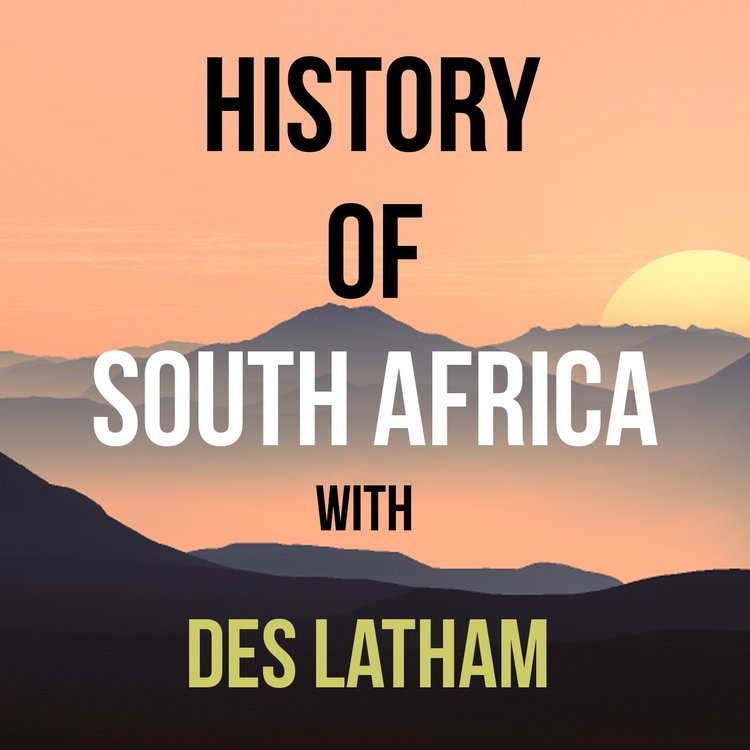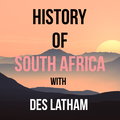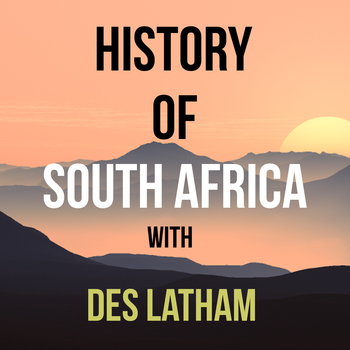
Episode 178 - A string of forts and Captain Maclean’s amaXhosa police recruits take revenge
Loading player...
The mid-nineteenth Century was like the calm before the storm with the discovery of diamonds a decade away, and then the wars between the Boers and Brits, and the Brits and amaZulu a glimmer in the imperial eye.
Moshoeshoe was gaining power amongst the Basotho, and to the east, Mpande continued to dream of crushing the amaSwazi.
But to the South on Christmas Day 1850, another frontier war in a long and bitter series between the Cape colony and the amaXhosa erupted in the wake of the witchcraft eradication processes enforced by Governor Harry Smith.
I spent much of last episode explaining the religious and social ethos and differences between the empire and missionaries on one side, and the amaXhosa and their spiritual leaders on the other.
Mlanjeni one of these spiritual leaders was the driver of this attempt by the amaXhosa to throw off the yoke of the empire. Andries Stockenstrom had been warning the British for some time that their tone-deaf and blunt attempts at destroying the power of the amaXhosa chiefs was not just chafing the people of British Kaffraria, but becoming dangerous.
Smith had been compelled to maintain a heavy force of patrols in this territory to enforce the removals of the amaXhosa from land now allocated to English farmers and dislodge those who’d returned to places from which they’d already been driven.
It was like the very definition of madness. The British authorities were repeating exactly what they’d done to the Xhosa before the Seventh Frontier War of 1846 and 1847.
Since then they’d been very busy.
The British had laid out an extensive series of roads and forts, centred on King Williams’ Town which was the main pivot for this grid of power in and around the Amatola mountains. The town was about 22 kilometers south of the base of these picturesque peaks, on the banks of the Buffalo River which provided protection against assault from the high ground.
It was the Boma Pass down to the Keiskamma River that troubled the British soldiers most, it also extended upwards into the Amatola mountains behind the Fort to a point known as Keiskamma Hoek — the source of the Keiskamma where another mission station called Uniondale was located. This is not to be confused with the town of Uniondale in the Karoo.
After looking out from Keiskamma Hoek, taking in the scenic views, swept up in the wonder of the beauty of this region, you’d climb back on your intrepid pony and head back down the trail past Fort Cox and Burnshill, towards Fort White, and then onwards another 30 kilometers or so to Fort Hare.
Many military historians have fixated on the British propensity to forget what they’d learned in previous wars, it was a kind of disease of the age, which would become a pandemic during the Anglo-Boer War, then a catastrophic forgetfulness by the First World War.
The Khoekhoe were now extremely angry at the British authorities for messing around with the Kat River Settlement agreements, and the Boers had been embittered by Harry Smith’s unilateral annexation of the TransOrangia region. This grew into a seething hatred when Smith had a young Boer called Thomas Dreyer executed.
With so many Boers gone in the Great Trek, the British had to rely on the Khoekhoe and unfortunately for the people of the Kat River, the people now being called the coloured people, opprobrium and malice were heaped upon them. Who needs enemies when the British treated their friends like this?
Moshoeshoe was gaining power amongst the Basotho, and to the east, Mpande continued to dream of crushing the amaSwazi.
But to the South on Christmas Day 1850, another frontier war in a long and bitter series between the Cape colony and the amaXhosa erupted in the wake of the witchcraft eradication processes enforced by Governor Harry Smith.
I spent much of last episode explaining the religious and social ethos and differences between the empire and missionaries on one side, and the amaXhosa and their spiritual leaders on the other.
Mlanjeni one of these spiritual leaders was the driver of this attempt by the amaXhosa to throw off the yoke of the empire. Andries Stockenstrom had been warning the British for some time that their tone-deaf and blunt attempts at destroying the power of the amaXhosa chiefs was not just chafing the people of British Kaffraria, but becoming dangerous.
Smith had been compelled to maintain a heavy force of patrols in this territory to enforce the removals of the amaXhosa from land now allocated to English farmers and dislodge those who’d returned to places from which they’d already been driven.
It was like the very definition of madness. The British authorities were repeating exactly what they’d done to the Xhosa before the Seventh Frontier War of 1846 and 1847.
Since then they’d been very busy.
The British had laid out an extensive series of roads and forts, centred on King Williams’ Town which was the main pivot for this grid of power in and around the Amatola mountains. The town was about 22 kilometers south of the base of these picturesque peaks, on the banks of the Buffalo River which provided protection against assault from the high ground.
It was the Boma Pass down to the Keiskamma River that troubled the British soldiers most, it also extended upwards into the Amatola mountains behind the Fort to a point known as Keiskamma Hoek — the source of the Keiskamma where another mission station called Uniondale was located. This is not to be confused with the town of Uniondale in the Karoo.
After looking out from Keiskamma Hoek, taking in the scenic views, swept up in the wonder of the beauty of this region, you’d climb back on your intrepid pony and head back down the trail past Fort Cox and Burnshill, towards Fort White, and then onwards another 30 kilometers or so to Fort Hare.
Many military historians have fixated on the British propensity to forget what they’d learned in previous wars, it was a kind of disease of the age, which would become a pandemic during the Anglo-Boer War, then a catastrophic forgetfulness by the First World War.
The Khoekhoe were now extremely angry at the British authorities for messing around with the Kat River Settlement agreements, and the Boers had been embittered by Harry Smith’s unilateral annexation of the TransOrangia region. This grew into a seething hatred when Smith had a young Boer called Thomas Dreyer executed.
With so many Boers gone in the Great Trek, the British had to rely on the Khoekhoe and unfortunately for the people of the Kat River, the people now being called the coloured people, opprobrium and malice were heaped upon them. Who needs enemies when the British treated their friends like this?

